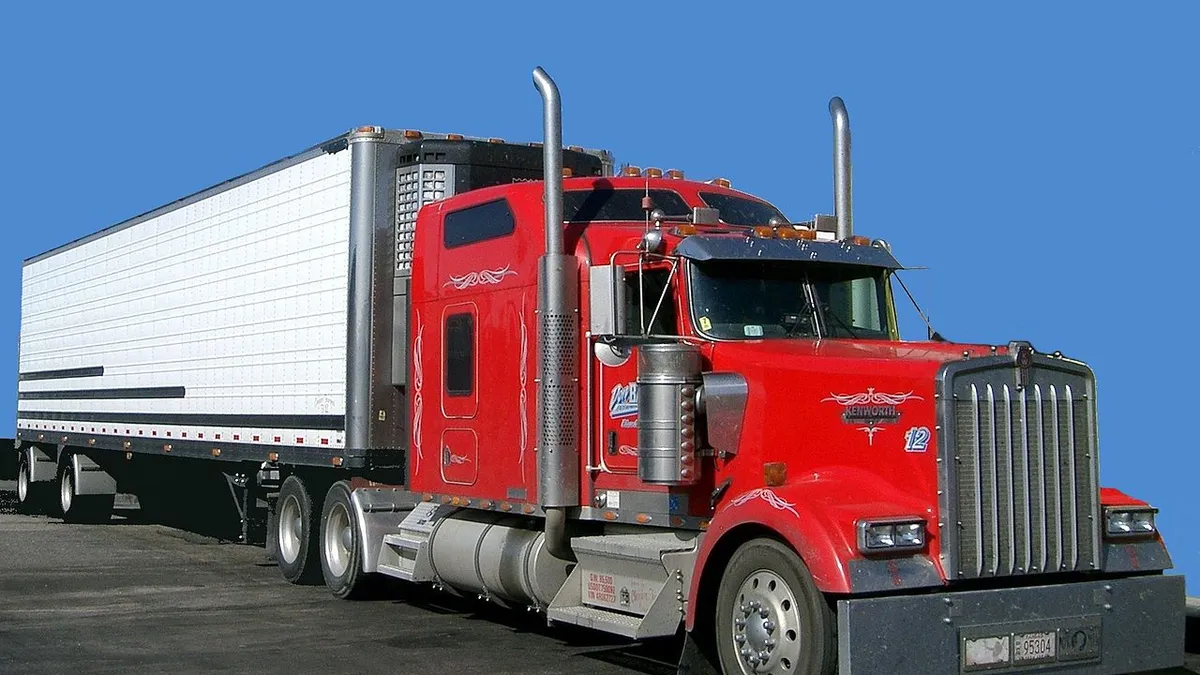Federal authorities will start enforcement on April 1 of a mandate that requires all commercial cargo trucks to be equipped with an electronic logging device (ELD). Transportation companies ramped up adoption last year, but estimates indicate up to a few hundred thousand trucks have yet to install the device.
With more than a hundred suppliers in the market, there’s bound to be enough ELDs to meet the demand. But many in the transportation industry say quality issues and a shortage of replacement parts could hamper adoption.
ELD demand remains high in early 2018
Since the mandate was first announced in 2014, manufacturers have flooded the market with more than 100 ELD products. These vendors run the gamut from truck manufacturers and telematics companies that have been in business for years, to startups whose only business is ELDs.
Last year saw a surge in demand as many carriers waited until the third and fourth quarters of 2017 to deploy ELDs, according to a report by Driscoll and Associates.
Velociti, a company that specializes in the deployment and maintenance of aftermarket technology products for transportation companies, spent much of last year installing ELDs Velociti president and COO Deryk Powell expects a continuation of strong demand in 2018. “Although the official mandate date has passed, many factors have contributed to the demand remaining strong into early 2018, which is a trend we expect to continue,” Powell says.
The regulation is over 640 pages long, to tell you how in-depth it is. There are many facets to it, and if you miss one, you won’t be in compliance.

Norm Ellis
President, EROAD
The cost of an ELD isn’t especially expensive (about $500 per year), but many owner-operators say such rigid tracking will reduce their autonomy, and most importantly, profit, says Clem Driscoll, founder and president of marketing consulting and research firm C.J. Driscoll & Associates. He estimates there are “a few hundred thousand” trucks that have yet to install an ELD.
“They’re afraid of losing money … They are concerned that time is going to be taken away from their drive time, or some portion of it, under the rules and that it’s going to kill them,” Driscoll says.
Quality a concern for lower-cost units
The wait-and-see approach and last-minute deployment of ELDs has thrown a kink in the ELD supplier market, making it a challenge to predict demand. The Owner-Operator Independent Drivers Association has fought the mandate and sent a letter to the House Transportation and Infrastructure Committee in March, noting “mounting issues” including malfunctioning devices, system failures, faulty GPS tracking and inaccurate recoding of duty statuses.
Many suppliers haven’t been able to meet customer expectations, Powell says. Core ELD functionality and reliability are top needs, along with a reasonable expectation for ELD providers to offer a proven process for the adoption, integration, training and support for the platforms. “Support — in particular the ability to troubleshoot problems and replace hardware efficiently when necessary — has been an area where many have struggled,” Powell says.
Current buyers in the market are now largely owner-operators seeking a low-cost solution. ELDs range from stand-alone tethered devices to tablet-based solutions and even BYOD (bring your own device) models that enable the driver to use their own phone or tablet. The FMCSA provides a checklist for choosing an ELD and maintains a list of registered self-certified devices
While the market includes products by big names such as Garmin, Verizon and Omnitracs, there are dozens of new suppliers in the space. EROAD went to market last year with an end-to-end ELD solution that offers full compliance and third-party certification to ensure owners are meeting compliance requirements.
The company has focused on meeting the needs of customers who are increasingly dissatisfied with other ELDs, says EROAD President Norm Ellis. “The regulation is over 640 pages long, to tell you how in-depth it is. There are many facets to it, and if you miss one, you won’t be in compliance,” Ellis says.
Meeting demand with added value
EROAD brought its product to market in March of last year, and like any new product, the device had a few “blips on the road,” says Ellis. Issues were resolved, and demand was so strong there were a couple of months where EROAD was up to a few hundred units short.
While that surge started to taper after the deadline, Ellis forecasts another wave of purchases as enforcement begins to ramp up. “Many small fleets and owner operators were still waiting on the sidelines to see if the mandate was really going to go through,” Ellis says.
Support — in particular the ability to troubleshoot problems and replace hardware efficiently when necessary — has been an area where many have struggled.

Deryk Powell
President and COO, Velociti
Beyond simply meeting compliance, some ELD suppliers are bringing additional value to the market with devices that offer other features like IFTA state tax reporting, electronic pre-trip inspections and complete fleet management systems. EROAD promotes itself as one platform with a “continuous ROI” to meet business needs.
What could be challenging in 2018 is meeting the supply of replacement hardware and repair technicians to resolve issues, Powell says. While a driver could have simply switched to paper logs in the past, the mandate now requires that systems be repaired within eight days of a known failure.
“I don’t see supply being ‘big enough’ as a concern in of itself. I think the more relevant question is the ability of providers and fleets to have a plan in place for the supply of replacement and repair hardware,” Powell says.




















